Breaking Up Is Easy to Do with Daikon Driller as a Cover Crop
Cover crop growing tipsCover crops can help tackle a lot of different problems in the garden such as erosion, soil quality, and more. If you’re dealing with soil compaction, Daikon Driller might be just the thing to help loosen up your soil while helping you to retain its nutrients.

Growing Daikon Driller Radish as a Cover Crop
Daikon Driller (Raphanus sativus longipinnatus) is a tillage radish that cultivates and breaks up compact soil. Its taproots are extremely long and can reach 10 to 20 inches deep into the soil. These taproots will gather and store nutrients and then enrich the soil as they decompose.
In addition to drilling deep, the big radish leaves cover the soil surface to keep it mulched and weed-free.
This winter-hardy and drought-tolerant cover crop is usually grown in the winter off-season.
- Plant Daikon Driller seeds at least 6 weeks before the first frost to allow them plenty of time to establish.
- The cover crop will die off when the weather gets cold (around 25°F).
- Simply leave the residue to decompose and plant your crops normally in spring.
- If winters are mild without enough frost to kill the plants, you’ll want to cut the plants down when pods appear to prevent seed development and self-sowing in the future.
How No-Till Gardening Improves Soil Quality
Using cover crops for no-till gardening has a lot of benefits. The roots and leaves keep the soil from eroding due to exposure to wind and water, and undisturbed soil is better able to absorb water and nutrients rather than being washed away. Tilling also disturbs the microbiome and insect life that naturally occurs at the soil level. Daikon Driller radish is an excellent no-till cover crop.

Daikon Driller For Compacted Soil
Sometimes, soil is simply too compacted and hard to work with without a little intervention. Daikon Driller radish is a great choice as a cover crop for gardeners who still want to go the no-till route but are struggling to break up the soil.
The word “daikon” literally means “big root” in Japanese and is a word used for all Japanese white radishes. Daikon Driller grows a taproot that grows deep (sometimes up to 6 feet), drilling and breaking up the shallow layers of soil. That’s why you’ll sometimes see this radish referred to as a “biodrill” or a “tillage radish” - it’s doing the work of aerating and breaking up the soil without the actual till!
After the crop dies and begins to decompose, later crops use the channels dug by Daikon Driller to set up roots and penetrate compacted soil layers without damaging the microbiome or causing so much erosion and loss of topsoil. The decaying plants also leave behind the nutrients they’ve scavenged, further enriching the soil.

Pairing Daikon with Other Cover Crops
Daikon Driller can be used alone or in combination with other cover crops like Hairy Vetch or Buckwheat. These crops have different benefits, like nitrogen-fixing properties and helping to further maintain soil moisture.
Other Benefits of Daikon Driller
There are some other reasons to choose Daikon Driller. It’s known as a forage radish. Unlike some other cover crops, daikon radishes have smooth leaves, so herd animals enjoy eating them.
Because radishes are part of the mustard family, radishes provide a modest benefit in terms of nematode and pest suppression. We suggest Yellow Mustard if you’re looking for more heavy-duty biofumigant action without the bio-drilling properties.
Tillage radish might not be the first thing you think of when you’re considering cover crops, but it has some unique benefits, particularly its ability to loosen the soil. It might be exactly the choice for loosening up and enriching your soil during the off-season.
Daikon Driller can be mixed with other cover crops in our tillage collection. We also offer a 1lb bulk seed option for larger garden plots.
Try growing Daikon Driller as a cover crop this season and see what a difference it makes in your garden.
Written by Teresa Chandler




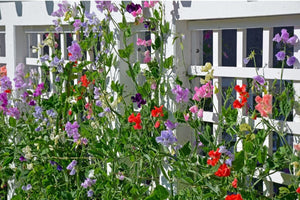
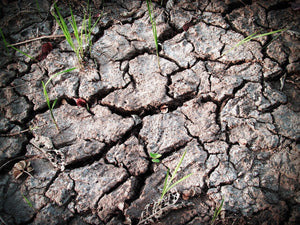
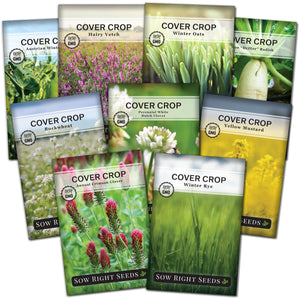
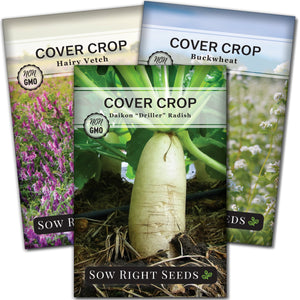
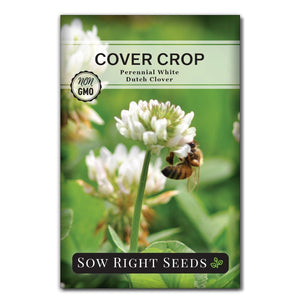
Daikon radish seeds can be planted about 3 inches apart. Our seed packets contain 10 grams, which is about 950 seeds. This is enough for an 8×6-foot area. But it could also be spread out even more. You could also add Hairy Vetch.
I want to plant daicon in NC to loosen the clay on a steep slope. How do I learn how much seed to use?
Leave a comment